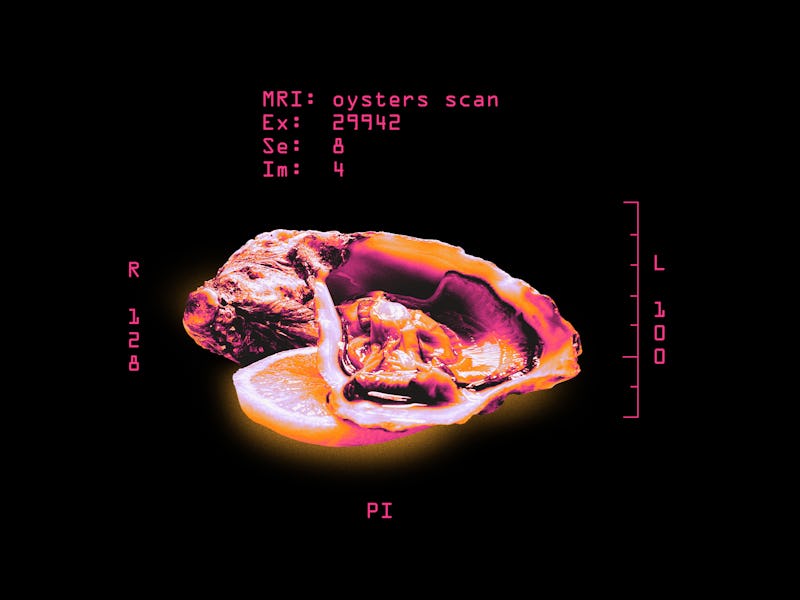A Marine Scientist Debunks a Myth About Eating Oysters
Oysters “r” good to eat year-round.

Savoring seafood on the water is a summer tradition that’s fast approaching. Scallops, mussels, lobster, and of course, oysters dapple a plate along with drawn butter, marinara sauce, and lemon. However, slurping down raw bivalves during the hotter months repudiates the conventional culinary wisdom that advises diners to only eat oysters during months that contain the letter “r.”
A quick mental run-down of the calendar brings up every month besides those from May to August. So does that mean we shouldn’t be eating oysters in the summer?
Conventional culinary wisdom says it’s best to eat oysters in months containing the letter “r” — in other words, avoid oysters in the summer — but it’s outdated.
Why “r” months?
This rule first appeared in writing in the 1599 English cookbook “Dyets Dry Dinner.” There’s reason to believe humans abided by this rule as long as 4000 years ago, thanks to a 2019 study looking at holes left by parasitic snails in oyster shells in Georgia. However, humans have harvested oysters for more than 10,000 years from the Chesapeake Bay.
The saying does have some truth, at least within historical context. During the summer, warmer water and warmer air promote bacterial growth in and on oysters. According to Josh Reitsma, a fisheries and aquaculture investigator at the Woods Hole Oceanographic Institution Cooperative Extension, waters above about 50 degrees Fahrenheit marks a spillover point for unbridled bacteria reproduction. Vibrio parahaemolyticus are the most common type, inducing food poisoning with diarrhea and vomiting.
Another type, Vibrio vulnificus, which Reitsma says dwells further south, can cause bloodstream infections resulting in severe blistering, amputation, and even death in 20 percent of these cases. According to the Centers for Disease Control, 100 people die every year from this infection. It does note that most vibriosis cases occur between May and October due to warmer water. When oysters get infected, they don’t look, smell, or taste different.
Oysters containing Vibrio bacteria don’t look, smell, or taste different from uncontaminated oysters.
Is it safe to eat oysters year-round?
A catchy idiom may be persuasive, but isn’t necessarily accurate. Indeed, today, oysters are safe to eat year-round — at least, as safe as it is to eat anything uncooked. Reitsma notes that they have inherent bacteriological risks associated with raw consumption.
A few major changes in the industry allow for year-round oyster enjoyment. First, refrigeration halts bacterial growth once the oyster has been harvested. Reitsma says that harvesters have one to two hours to get their findings on ice. Because of refrigerated transport, fisheries can gather oysters from waters that stay cold during the summer and ship them out.
“Today, oysters are pulled from colder waters and are shipped south, making them available in this time frame,” writes Martin Bucknavage, an industrial food safety specialist at Penn State University Extension, to Inverse.
Strict rule enforcement also means that oyster harvesting follows higher standards than before. According to Reitsma, certifying bodies of water and making sure it’s up to quality is key. “It's a managed risk and a pretty safe product in the grand scheme of things,” he says.
Do oysters taste different throughout the year?
While the seafood industry has picked up the slack, the saying still isn’t entirely wrong.
Summer oysters may be on the shrimpy side because “r”-less months constitute oyster spawning season. That doesn’t make for a spoiled oyster, but these delicacies do “lose a ton of their body weight,” Reitsma says. “If you open one up, they look a little skinny because they put so much energy into reproduction.”
During the winter they bulk up with glycogen, which is a carbohydrate stored in tissue, to survive while dormant through the cold. Reitsma, who lives in Massachusetts, says that winter oyster tissue may have a “meatier” quality. Still, this shift doesn’t affect oyster safety at all.
So as far as this rule goes, treat every month of the year as if it contains the letter “r.”